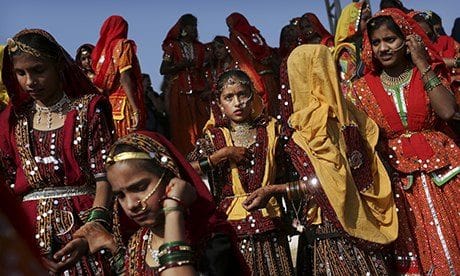
India’s sex ratio at birth has improved, according to Union Minister for Women and Child Development Smriti Irani. However, such a claim seems very much dependent on the figures used.
Irani credited the Centre’s Beti Bachao, Beti Padhao (Save Daughter, Educate Daughter) initiative with the improvement while speaking at an event last Friday. The disparity in India’s sex ratio at birth has been alleviated by thirteen points since 2015, from 918 girls for every thousand boys to 931 girls for every thousand boys.
“Since the launch of Beti Bachao, Beti Padhao, central and state governments with Janbhagidari [People’s participation] have consistently strived to ensure the potential of our daughters is celebrated,” Irani said. She added that an improvement of 26 points is hoped to achieve in the next year.
Between the 2013-15 and 2015-17 periods…India’s sex ratio declined from 900 females for every 1,000 males in the former to 896 females for every 1,000 males in the latter. India’s imbalanced sex ratio indicates figures of 63 million girls and women being ‘missing’
However, these statistics may not tell the full story as they reflect data from the Health Management Information System, according to The Economic Times. As the publication notes, this is “updated by Anganwadi and Asha workers, which largely considers home deliveries and births in government institutions only. It lacks information from private hospitals and institutions.” The Economic Times points to Niti Aayog data released earlier this year, which indicates a worsening sex ratio at birth in twelve states out of 22 surveyed (as previously reported by Health Issues India, data is limited with just 22 states and union territories reporting on their sex ratios).
![Sex ratio at birth. Sex determination ban in India to prevent imbalanced sex ratio. By Melanurya (Own work) [Public domain], via Wikimedia Commons](/wp-content/uploads/2017/04/Sex_determination_ban-300x225.jpg)
The need is for a robust system of monitoring and surveillance, to ensure compliance with the law prohibiting sex-selective abortion. Outreach initiatives to facilitate the empowerment of girls and women and to guarantee adequate standards of education and nutrition will also be needed. One of the major issues facing India’s girls and women is the high death toll of gender discrimination, both prenatally and postnatally. Strengthening existing initiatives to combat this will be necessary for the future development of India’s girls and women.

